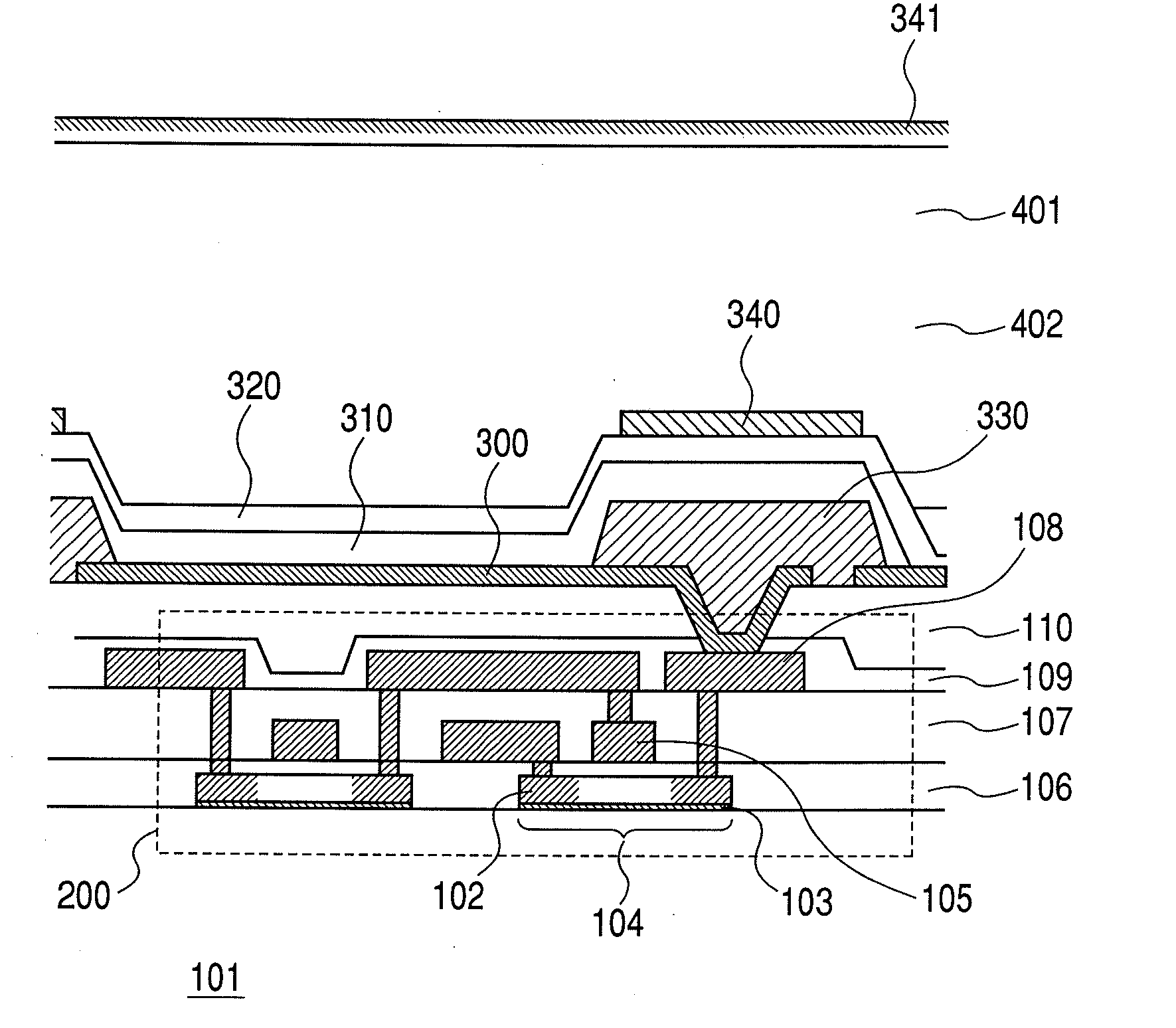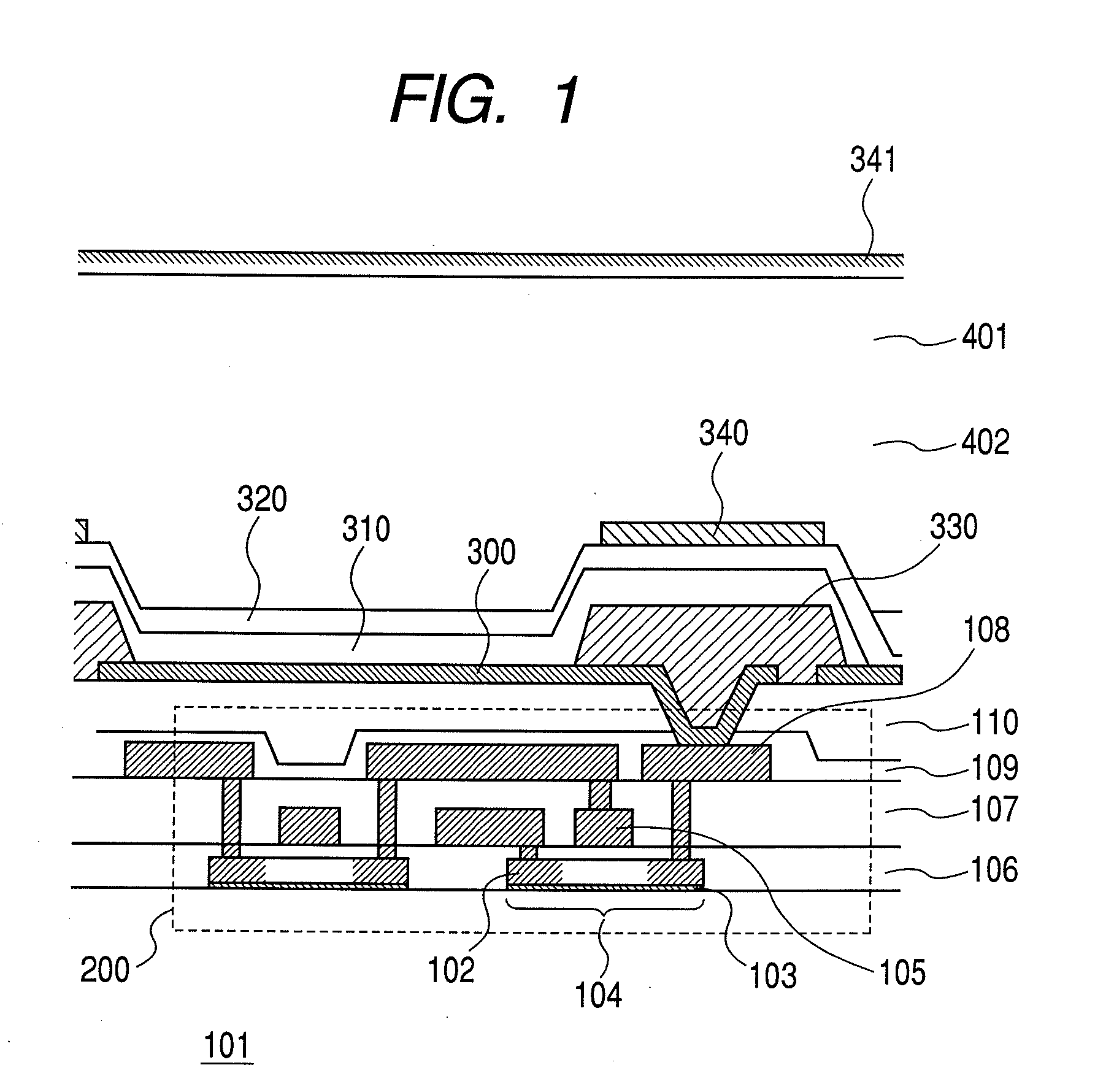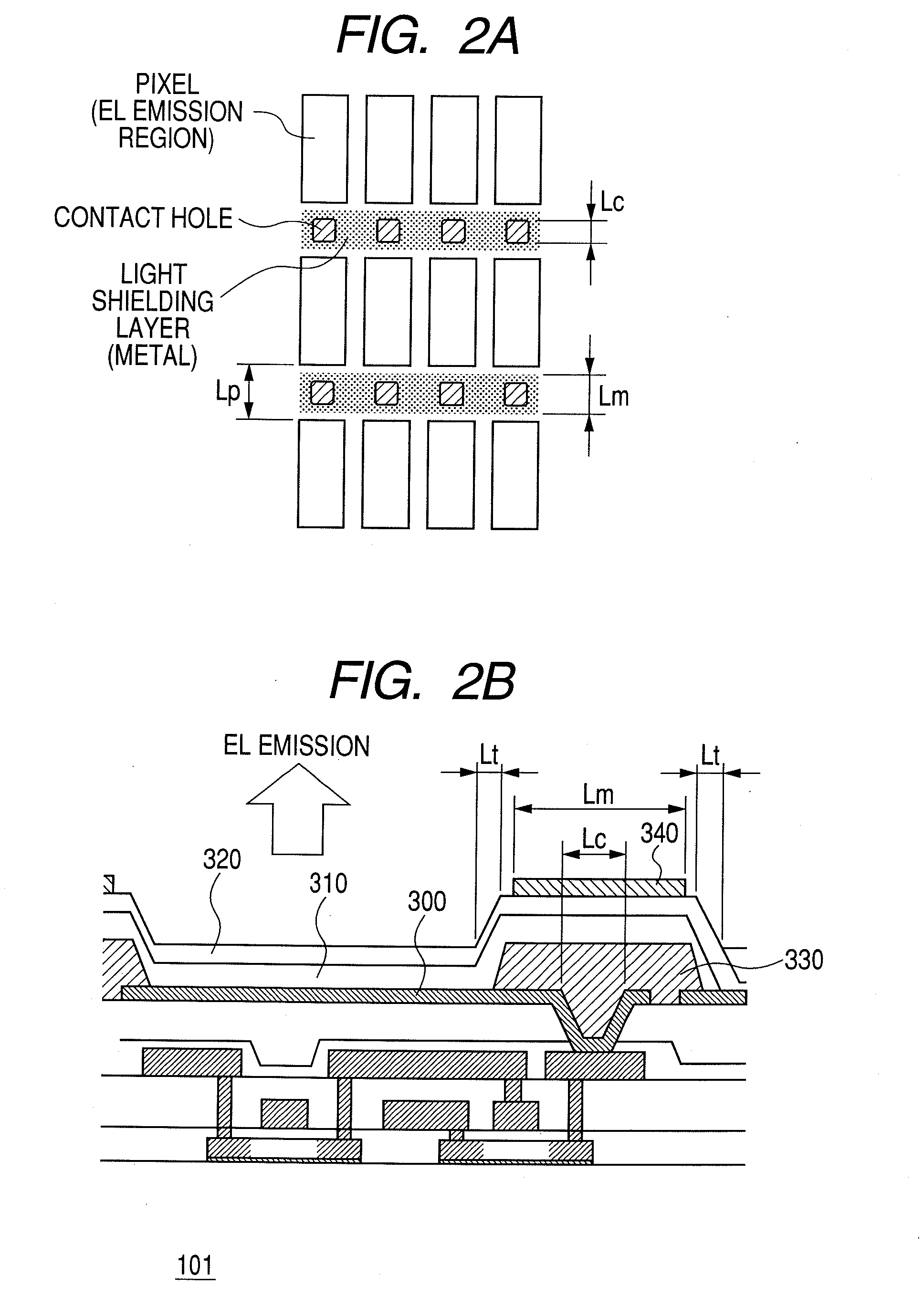Organic light-emitting apparatus
- Summary
- Abstract
- Description
- Claims
- Application Information
AI Technical Summary
Benefits of technology
Problems solved by technology
Method used
Image
Examples
first embodiment
[0048]FIG. 1 is a schematic view illustrating an organic light-emitting apparatus according to the present embodiment.
[0049]The organic light-emitting apparatus has a configuration including a plurality of organic light-emitting devices and a polarizing member (polarizing plate) 341 on a light extraction surface side. In addition, an opening (contact hole) is formed between the adjacent organic light-emitting devices, that is, outside a light-emitting region, in order to connect a first electrode (reflective electrode) 300 of the organic light-emitting device and a TFT 200 for driving the organic light-emitting device to each other. On the opening, an insulating layer (device separation layer) 330 made of a resin is formed as a layer for covering the opening. The insulating layer 330 has another opening which is different from the above-mentioned opening (contact hole) and defines a light-emitting region. Further, because the insulating layer 330 is a light transmissive member inclu...
PUM
 Login to View More
Login to View More Abstract
Description
Claims
Application Information
 Login to View More
Login to View More - R&D
- Intellectual Property
- Life Sciences
- Materials
- Tech Scout
- Unparalleled Data Quality
- Higher Quality Content
- 60% Fewer Hallucinations
Browse by: Latest US Patents, China's latest patents, Technical Efficacy Thesaurus, Application Domain, Technology Topic, Popular Technical Reports.
© 2025 PatSnap. All rights reserved.Legal|Privacy policy|Modern Slavery Act Transparency Statement|Sitemap|About US| Contact US: help@patsnap.com



